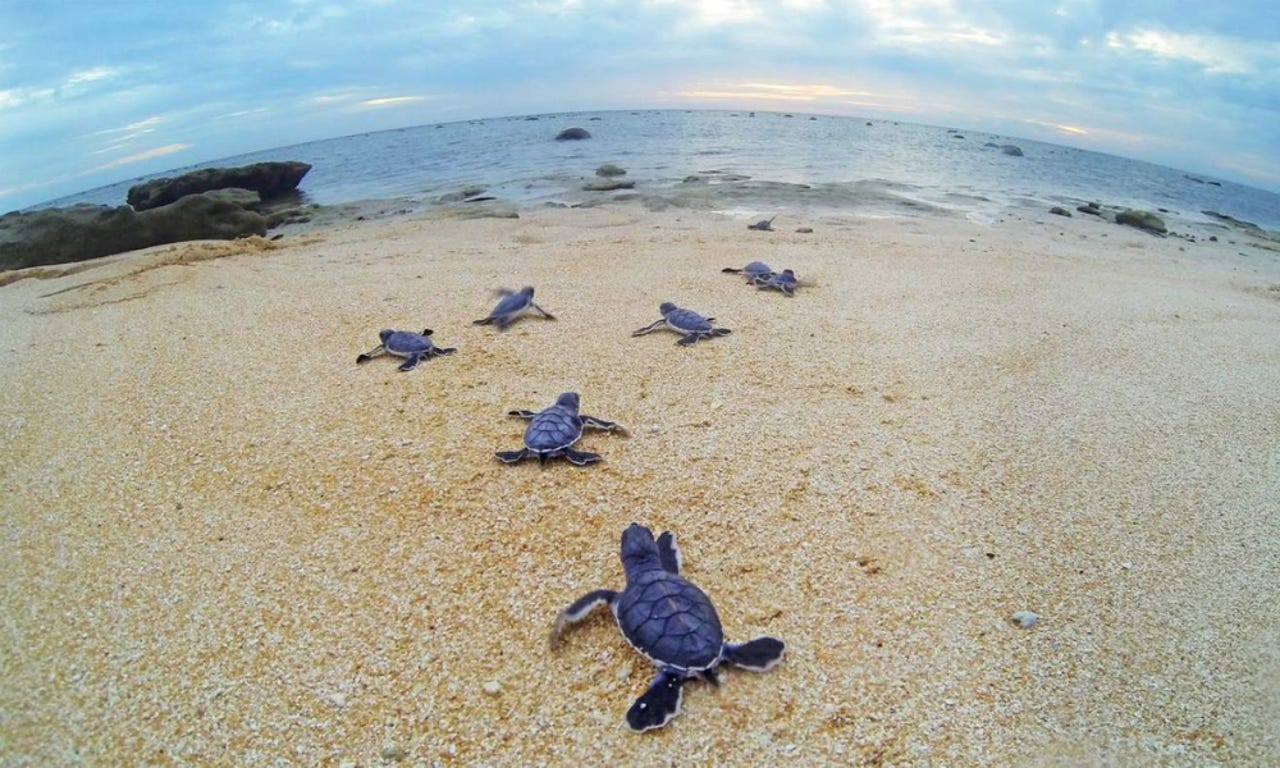Queensland council trialling smart lights to help confused turtle hatchlings


The town of Zilzie, near Rockhampton in Queensland, is a turtle nesting site, with the reptiles building their nest near the town's esplanade.
However, due to the street lighting around the area, sometimes when the hatchlings leave their eggs, they can become disorientated, fail to find the horizon, and stray from the path they should be taking into the ocean.
Even after they reach the sea, the hatchlings can sometimes be "lured back" by the lights, councillor Andrea Friend said, who holds responsibility for the council's water, waste management, and environment portfolio.
"Hatchlings have a low chance of survival with only about 1 in 1,000 reaching maturity, so it's vital council helps to maximise nesting success and hatchling survival," Friend said.
In an effort to help the turtles out, the council is trialling the replacement of four lights with amber coloured, remotely dimmable smart lights. The lights are connected to a LoRaWAN network provided by NNNCo, which was deployed to the shire in 2019.
"Zilzie is a well-known nesting area for sea turtles and it's important that council acts to protect the species with this trial. Council has contacted nearby residents to explain the changes to the street lighting which will remain in place throughout the 2021 turtle hatchling season," Friend added.
See also: LoRaWAN networks are spreading but security researchers say beware
Earlier in the week, NNNCo announced an agreement with New Zealand telco Spark that will allow LoRaWAN users to deploy on either side of the Tasman Sea, and roam on the other side of the ditch.
In order to implement the roaming arrangement, NNNCo's enterprise platform, N2N-DL, has been integrated into Spark's network core.
A recent blog post published by CyberArk showed how to conduct a denial of service attack on a Chirpstack network by replaying frames from a malicious LoRaWAN gateway.
"The task of the gateway is pretty simple and limited by design," researcher Emmanuel Ouanounou wrote.
"The coverage of the network is highly dependent on the number of gateways available and therefore, the LoRaWAN protocol does not require gateways to perform any security checks, so that their implementation is easier."
After disclosing the attack to Chirpstack, the open source project made changes to prevent unregistered gateways from communicating with the network server.
"An attacker now requires taking over an existing gateway in order to perform this attack," Ouanounou added.
"Moreover, it strengthens the consistency of the product with Chirpstack's philosophy: Gateways should be trusted for the network to be trusted."
Related Coverage
- Spark and NNNCo team up to create a roaming trans-Tasman LoRaWAN network
- NNNCo to deploy IoT network for Tasmania's utility service
- NNNCo trials IoT network for Hunter region's water pipe network
- Queensland named as home of Boeing's military drone production facility
- University of Queensland partners with IBM to progress data research